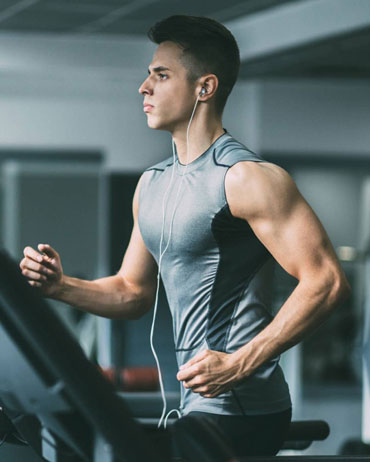
A strong neck will undoubtedly help to prevent injury. Unfortunately, many athletes ignore neck training until there’s a problem. In other words, they react to an injury, rather than proactively training the neck all along.
Don’t make that mistake.
Neck Training Demo
I recently posted a short neck training video that includes several exercise variations. As you’ll see, I am able to train the neck in multiple directions with a few inexpensive tools.
After posting this video to social media, I received several questions about the exercises, so I’ll explain each in more detail below.
I. Wraparound Weight
The first exercise that you’ll see is performed with a wraparound neck weight. Such weights are sold by most boxing equipment manufactures and typically weigh around 10 pounds. With a wraparound weight, it is possible to train the neck in all directions. The total weight is also minimal which makes this tool ideal for beginners.
More advanced athletes can still benefit from these wraparound weights however as they are excellent for higher reps. For example, Gennady Golovkin can be seen using a similar weight for high reps in this past entry. High rep training can be excellent when looking to add size to your neck.
II. Resistance Bands
Resistance bands are also excellent for neck training. In the video above, I am using a 41-inch medium band from Iron Woody Fitness. A small or mini band could also be used though. You won’t need too much resistance from the band to make this exercise effective.
As for attaching the band to your head, I use a strip of industrial strength Velcro. For more detailed information about training the neck with bands, please refer to this past video.
III. Bridging
I grew up watching Mike Tyson perform a variety of neck bridging exercises. As a young fighter, I naturally copied Tyson and began performing the same exercises. Over 25 years later, I’m still bridging, and my neck feels as healthy and strong as ever.
With that said, I understand that bridging is not for everyone (particularly beginners). Bridging is only safe for those who possess the necessary strength and flexibility for the exercise. Thus, my demonstration of the bridge does not serve as a recommendation for all to follow suit. I am simply demonstrating some of the exercises that I have used over the years.
IV. Neck Harness
Another option for neck training is to work with a neck harness. A neck harness can be used by beginners and advanced athletes as you can set the load specific to your ability. Beginners should start light and progress gradually. More advanced athletes can work with heavier loads for a more moderate rep range (ex. 8 to 15 reps).
V. Manual Resistance
Neck training can also be performed via manual resistance (not seen in the video). As a coach, I typically use a towel to provide resistance in this fashion. The fighter will rest his head off the end of the ring (or a bench). I will then provide resistance by pulling down on a towel that is draped around the fighter’s head. We will work in four directions (facing up, facing down, and each side).
Training Frequency and Rep Range
As for neck training frequency, two or three brief sessions per week will be adequate in most cases. You don’t need a lot of time to strengthen the neck. Just be sure to gradually ease into neck training if you haven’t done so before.
As for rep ranges, I typically work with a moderate rep range when using heavier weights or resistance bands (ex. 8 to 15 reps). I then finish with higher reps using the wraparound weight. As for what constitutes high reps, individual ability will dictate how many reps you can and should safely perform.
Final Thoughts
Although I’ve written about neck training many times before, it remains a topic that does not receive nearly enough attention. Therefore, I have no problem repeating myself if it gets more combat athletes to take neck training more seriously.
And if you won’t take my advice, perhaps you’ll listen to George Chuvalo instead. I’ve shared his video many times before and I’ll share it again. Chuvalo had one of the best chins in the history of boxing. And while some of that was natural, he made a point to train his neck religiously. It certainly helped as he was never knocked down in over 90 professional fights.
Listen and learn…


